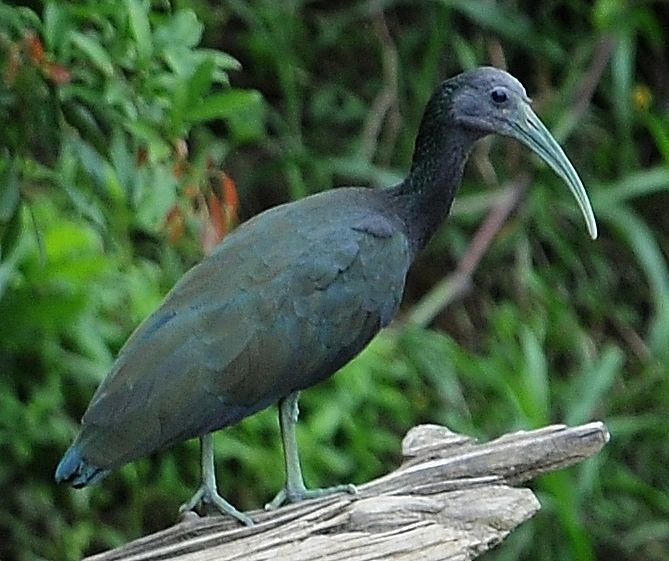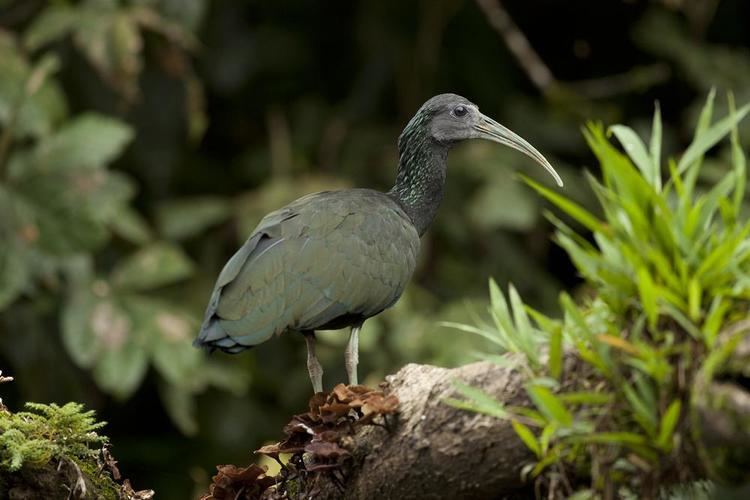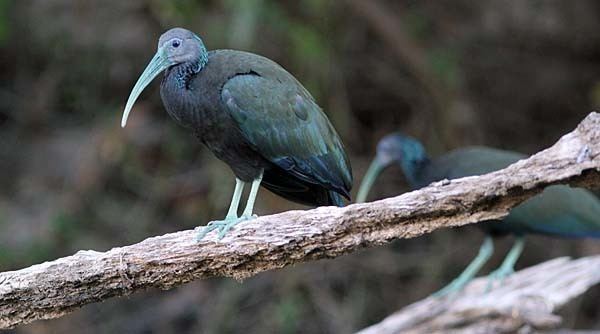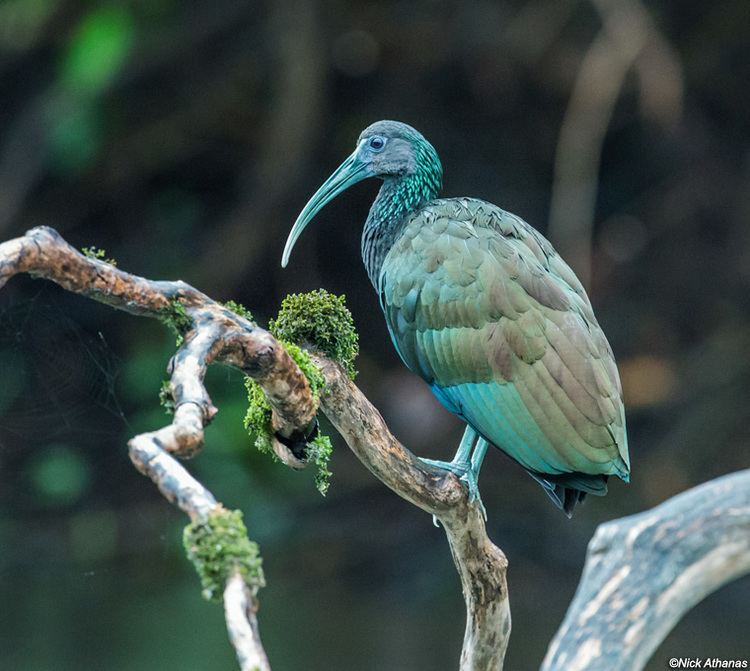Scientific name Mesembrinibis cayennensis Higher classification Mesembrinibis | Phylum Chordata Rank Species | |
Genus MesembrinibisJ.L. Peters, 1930 Similar Bare‑faced ibis, Theristicus, Plumbeous ibis, Sharp‑tailed ibis, Buff‑necked ibis | ||
Cor cor mesembrinibis cayennensis green ibis
The green ibis (Mesembrinibis cayennensis), also known as the Cayenne ibis, is a wading bird in the ibis family Threskiornithidae. It is the only member of the genus Mesembrinibis.
Contents
- Cor cor mesembrinibis cayennensis green ibis
- Taxonomy
- Description
- Similar species
- Range and habitat
- Behaviour
- Feeding
- Breeding
- Voice
- Conservation status and threats
- References
This is a resident breeder from Honduras through Nicaragua, Costa Rica and western Panama, and South America to northern Argentina. It undertakes some local seasonal movements in the dry season.

Taxonomy

When he first described the green ibis in 1789, from a specimen collected in Cayenne, French Guiana, Johann Friedrich Gmelin gave it the scientific name Tantalus cayennensis, assigning it to the same genus as a number of Old World ibis species. In 1930, James Lee Peters moved it to the monotypic genus Mesembrinibis; it has no subspecies. DNA–DNA hybridization studies show that the species falls squarely into the New World ibis clade, with its closest relatives being the sharp-tailed ibis, the American white ibis and the buff-necked ibis.

The genus name Mesembrinibis is a combination of the Greek word mesēmbrinos, meaning "southern" (from mesēmbria, meaning "south") and ibis. The specific epithet cayennensis means "of Cayenne or French Guiana", and refers to the collection site for the type specimen.
Description

The green ibis is a medium-sized ibis, with short legs and a long, slender, decurved bill. It measures 45–60 cm (18–24 in) in length and ranges from 700 to 890 g (1.5 to 2.0 lb) in mass. The sexes, which are identical in plumage, overlap somewhat in measurements, though the largest birds are male. Breeding adults have glossy greenish-black bodies, pale green legs and bill, and grey bare facial skin patches. Juveniles are much duller, but can be distinguished from the similar glossy ibis by their bulkier shape, shorter legs and broader wings. This species, like other ibises, flies with neck outstretched. Its flight is heavy, with fewer glides and jerkier wingbeats than its relatives.
Similar species

If seen in good light, the green ibis is distinctively dark, and unlikely to be confused with any other ibis. In poor light, however, it might be confused with the glossy ibis; the latter (which is bronzy-maroon in color) has longer legs and a slimmer build.
Range and habitat
The green ibis is found from Costa Rica south to northern Argentina and Paraguay. However, there have been sightings from as far north as Honduras, and fossil records show the species formerly occurred as far north as Kansas in the United States. It is found in a variety of forested wetland habitats, particularly swamps and along the edges of rivers and lakes, at altitudes up to 500 m (1,600 ft).
Behaviour
The green ibis is largely crepuscular. Less gregarious than its relatives, it is usually seen alone or in pairs. When it does forage in mixed-species flocks, it tends to remain on the fringes, usually among other green ibises. It regularly perches in trees.
Feeding
Like other ibises, it eats fish, frogs and other water creatures, as well as insects.
Breeding
Its nest is a flimsy platform of twigs built high in a tree. It has been recorded harassing sunbitterns nesting in the same tree.
Voice
It has a hollow, hooting, accelerating call, most often heard at dawn and dusk. Transcribed as kro kro or koro koro, the call is described as "mellow".
Conservation status and threats
Because of its huge range and large population, the green ibis is rated as a species of least concern by the International Union for the Conservation of Nature; however, its numbers do appear to be decreasing. It is at least occasionally hunted (and eaten) by residents of Central and South American countries.
The green ibis is the type host of a species of bird louse, Plegadiphalus cayennensis.
